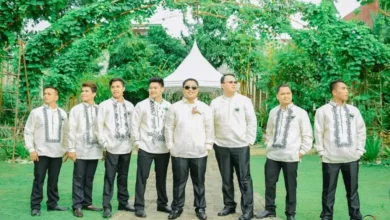The Arctic is a realm of breathtaking beauty and unforgiving conditions. For centuries, the Inuit people have thrived in this challenging environment, developing a rich culture intertwined with the land, sea, and sky. At the heart of their survival, and indeed, their spirituality, lies the humble parka—a garment far more significant than mere clothing.
This article explores the profound connection between traditional Inuit parkas and the spiritual rituals they encompass, revealing a complex tapestry of practicality, artistry, and belief.
The Inuit and Their Arctic World
The Inuit, an Indigenous people inhabiting the Arctic regions of Canada, Alaska, Greenland, and Russia, are masters of adaptation. Their lives are deeply connected to the cyclical rhythms of nature, the migration of animals, and the ever-changing weather patterns. This deep connection has fostered a unique worldview where the material and spiritual realms are intertwined. Understanding this holistic perspective is essential to grasping the importance of the parka within Inuit culture.
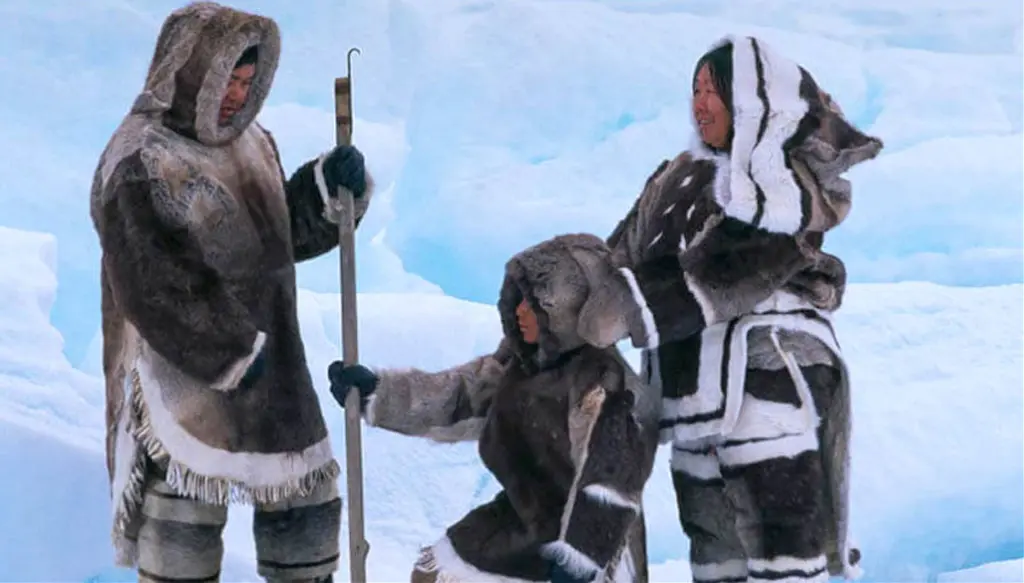
A World of Spirits
Inuit spirituality centers around the belief that everything, from animals to rocks, possesses a spirit. These spirits must be respected and honored to maintain balance and harmony in the world. Traditional Inuit ceremonies and rituals often involve interaction with these spirits, and clothing, specifically the parka, plays a crucial role in facilitating this communication. The parka isn’t just something to wear; it’s considered a tool, a symbol, and a part of the individual’s spiritual identity.
See also Traditional Sarees Worn in Indian Wedding Rituals
Traditional Sarees Worn in Indian Wedding Rituals
The Traditional Inuit Parka: More Than Just a Coat
The parka is an iconic garment, uniquely designed to withstand the extreme Arctic cold. But to the Inuit, it is so much more than a practical piece of clothing. It’s a carefully crafted item, imbued with tradition, skill, and spiritual significance. Understanding the materials, construction, and symbolism of the parka reveals its deeper meaning within Inuit culture.
Materials: A Gift from the Land
Traditionally, Inuit parkas were made from natural materials sourced from the land and sea. Animal hides, particularly caribou, seal, and polar bear, were used for the outer shell, providing excellent protection from wind and snow.
The fur, with its insulating properties, created a microclimate around the wearer’s body. Linings were often made of bird skins, or inner fur layers, adding further warmth. Each material was carefully selected and processed with techniques passed down through generations, reflecting an intricate knowledge of the local environment.
The acquisition of these materials is often intertwined with ritual and respect, reinforcing the spiritual significance of the final product. The use of specific animals wasn’t random; it often reflected the wearer’s region, hunting skills, and spiritual affiliations.
See also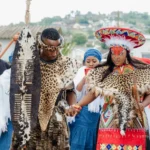 Zulu Traditional Attire in South African Wedding Rituals
Zulu Traditional Attire in South African Wedding Rituals
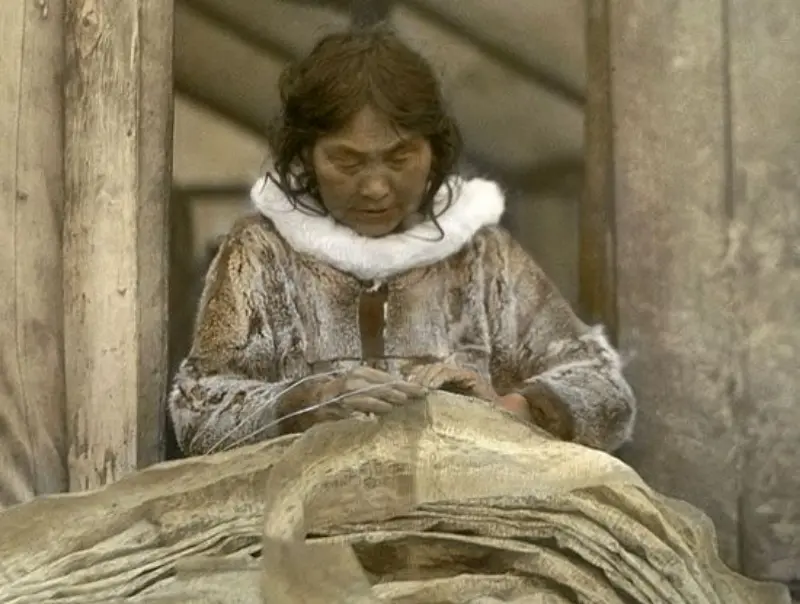
Construction: A Labour of Love and Skill
Creating a traditional Inuit parka was (and often still is) a labor-intensive process. Each hide was meticulously prepared through scraping, stretching, and tanning. The pieces were then skillfully cut and sewn together, often by hand, using sinew from animal tendons as thread. The process required immense skill, patience, and a deep understanding of the materials.
The act of making a parka was a time of concentration and contemplation, often imbued with prayers and blessings. The seams were carefully crafted not just for durability but also to ensure the parka sat correctly on the body for maximum warmth and mobility, and to allow for the circulation of air to avoid overheating.
Design and Functionality

The parka’s design varies across different Inuit regions, but some common features include a large hood, often trimmed with fur to protect the face from the elements. A longer back provided extra warmth when sitting on ice or snow, and loose sleeves allowed for free movement while hunting or performing other tasks.
Some parkas incorporated elaborate decorations like embroidery, beadwork, and fur mosaics, reflecting both artistry and personal identity. The design was therefore functional but also served as a canvas for expressing cultural heritage and individual creativity.
The Parka and Spiritual Rituals: A Garment of Transformation
The traditional Inuit parka is not simply a practical item of clothing; it’s deeply embedded in Inuit spiritual practices. It’s worn during ceremonies, used in rites of passage, and even believed to offer protection from malevolent spirits. Its presence and significance extend far beyond the mundane realm. Let’s explore some of the ways in which the parka intersects with Inuit spirituality.
Ceremonial Attire and Ancestral Connections
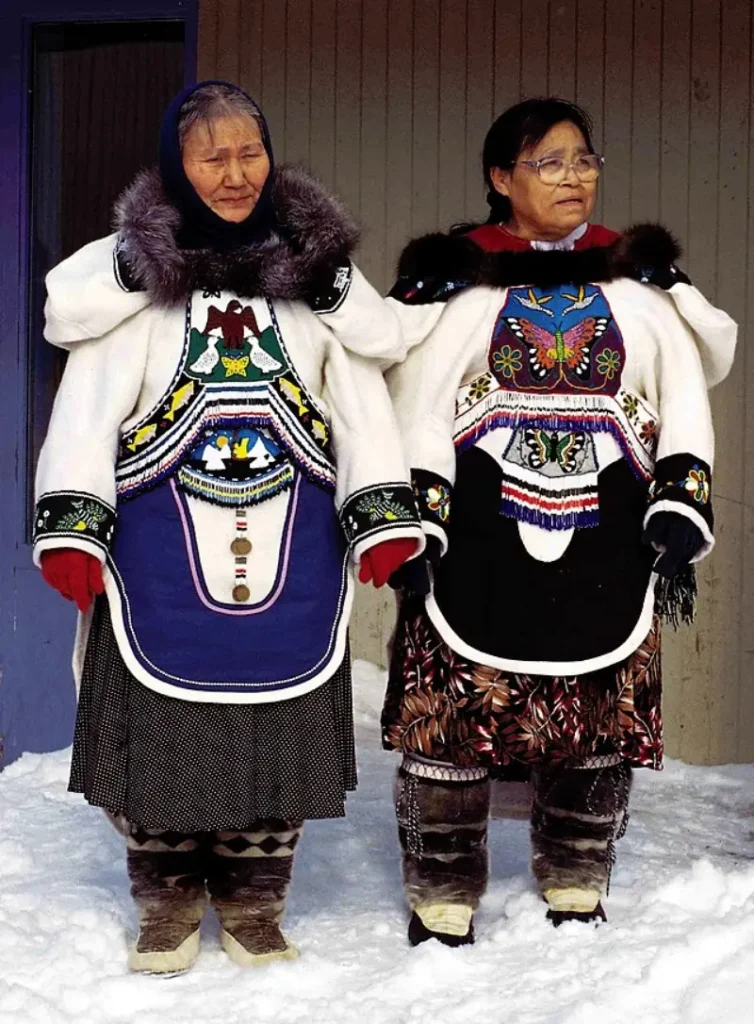
Parkas play a central role in many Inuit ceremonies. Specific parkas, often more elaborate and decorated than everyday garments, are worn by shamans during rituals aimed at connecting with the spirit world. These ceremonial parkas may feature symbolic imagery, representing specific spirits or helping the shaman in their trance-like journeys.
The garments serve as a visual and tactile link to ancestral spirits and traditions, helping to maintain the continuity of cultural knowledge and spiritual practices.
Wearing the ceremonial parka can be seen as a form of embodiment of the shaman’s spiritual power and connection with the spirit world.
Rites of Passage and the Shaping of Identity
Parkas are also integral to Inuit rites of passage. For example, young individuals may receive their first custom-made parka as they transition from childhood to adulthood. This symbolizes their readiness to take on the responsibilities of adult life and their integration into the community. The parka, imbued with the skill and care of its maker, becomes a tangible representation of their journey and growth.
The act of wearing the new parka during these transition rituals signifies a change in status and a deeper connection with cultural identity. Often, specific designs or symbols are incorporated into these transition parkas to reflect the individual’s role in the community.
Protection and Spiritual Shielding
Inuit beliefs suggest that the parka, particularly one carefully constructed, can offer protection from malevolent spirits. The layers of animal skin and fur, believed to possess their own spiritual essence, act as a barrier against negative energies and entities. Specific designs, patterns, or charms may be added to a parka for extra protection, enhancing its protective aura.
The parka, in this sense, becomes an external layer of spiritual defense, safeguarding the wearer from perceived spiritual dangers. This highlights the interconnectedness of physical protection and spiritual wellbeing in Inuit thought.
The Parka as a Living Entity
The traditional Inuit worldview does not separate the material from the spiritual, thus imbuing objects with a spiritual essence. The parka, having been crafted from natural materials with intentional care and imbued with cultural significance, is seen as possessing its own life force. It’s not simply an inanimate object but a living entity with which the wearer develops a deep connection.
The care and maintenance of the parka are treated with respect, as if tending to a valued companion. This unique perspective underscores the significance of the parka in Inuit lives and its integral role in their spiritual framework. Some Inuit believe that a parka holds the memories and experiences of its wearer, making it an item of great personal and spiritual value.
The Modern Parka: Maintaining Tradition in a Changing World
While contemporary life has brought changes to many aspects of Inuit culture, the importance of the parka endures. Modern materials like synthetic fabrics are sometimes used, but the core principles of design, construction, and spiritual significance often remain. This section explores how the tradition of the parka continues in the modern world.

Adaptation and Innovation
While some Inuit continue to make and wear traditional parkas from natural materials, others have embraced modern materials and techniques. This blend of tradition and innovation highlights the resilience of Inuit culture in a constantly evolving world. Modern fabrics, such as Gore-Tex, can provide excellent weather protection but may lack the spiritual essence associated with traditional materials.
The challenge for contemporary Inuit is often to find a balance between practicality, tradition, and cost. However, even in modern iterations, the spirit of the parka – its craftsmanship, warmth, and cultural identity – often remains.
Revitalization and Cultural Pride
There is a growing movement among Inuit communities to revitalize and maintain traditional skills, including parka making. Workshops and classes are held to pass on knowledge to younger generations, ensuring the continuation of this important cultural practice. This revitalization is not just about preserving old techniques but also about reclaiming cultural pride and identity.
The parka, therefore, becomes a powerful symbol of Inuit resilience and a testament to their unique heritage. The use of contemporary platforms, like social media, also helps to showcase and celebrate traditional parka designs to wider audiences.
The Parka as a Symbol of Resilience
In the face of climate change, resource extraction, and other modern challenges, the parka stands as a symbol of Inuit resilience and their deep connection to their environment. It represents not only their ability to survive in harsh conditions but also their unwavering commitment to their cultural heritage.
The parka, as a tangible artifact, embodies their history, their spirituality, and their future. The fact that this garment remains so vital after centuries of cultural evolution speaks volumes about its power and importance.
The traditional Inuit parka is far more than just a coat. It’s a cultural artifact, a work of art, and a spiritual tool, deeply intertwined with the lives and beliefs of the Inuit people. Its meticulous construction, the use of natural materials, and its role in spiritual rituals all contribute to its significance.
From ceremonial attire to rites of passage, and as a form of spiritual protection, the parka exemplifies the unique worldview of the Inuit, where the physical and spiritual realms are inseparable. As we understand more about the Inuit parka, we gain a greater appreciation for the depth of their cultural traditions and their profound connection to the Arctic world.
The continued existence and evolving forms of the parka are a testament to the enduring strength and adaptability of Inuit culture in a constantly changing world. The parka, therefore, remains a vital link to their past, their present, and their future, forever embodying the spirit of the Arctic.

